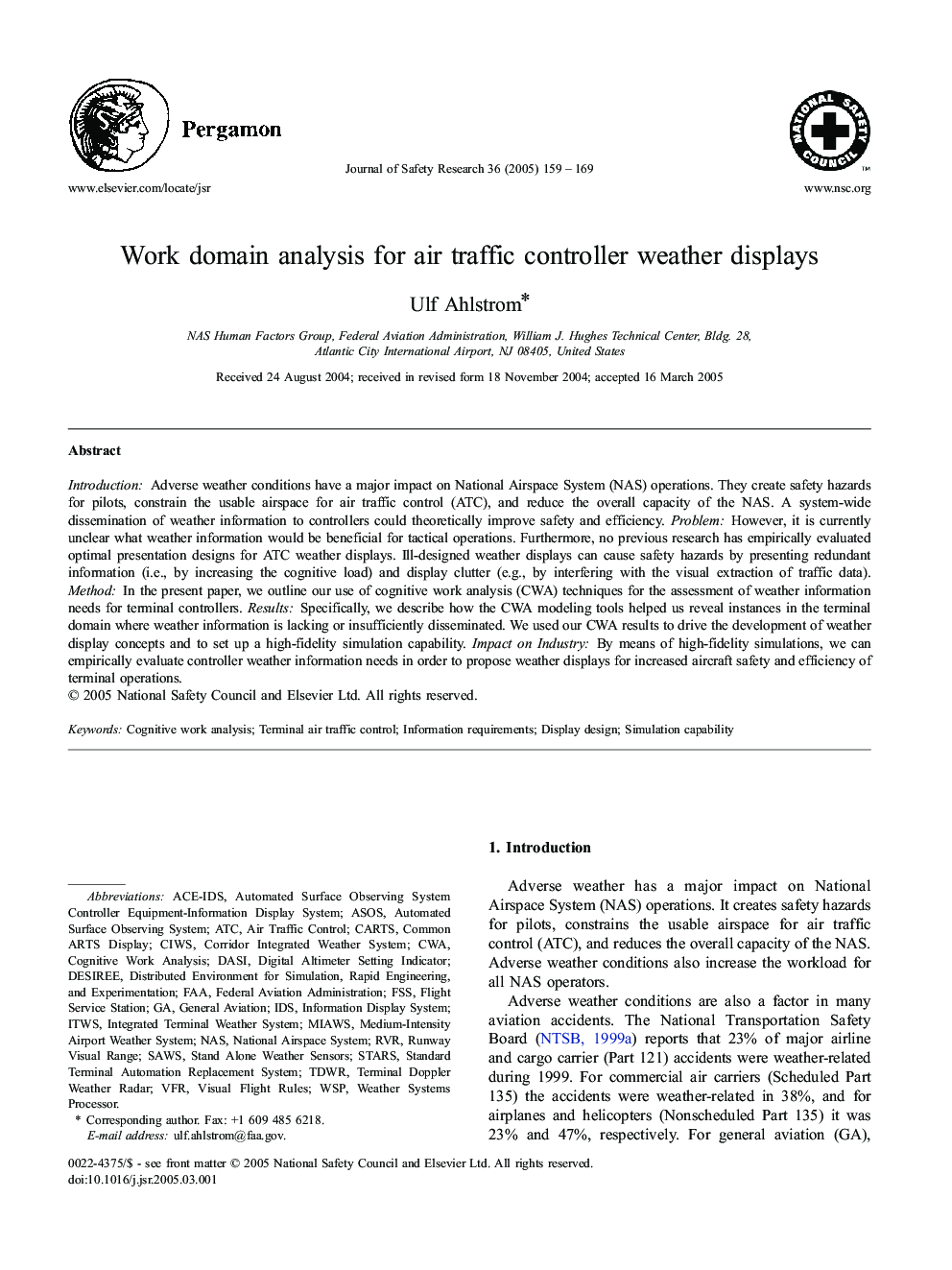| Article ID | Journal | Published Year | Pages | File Type |
|---|---|---|---|---|
| 10373586 | Journal of Safety Research | 2005 | 11 Pages |
Abstract
Introduction: Adverse weather conditions have a major impact on National Airspace System (NAS) operations. They create safety hazards for pilots, constrain the usable airspace for air traffic control (ATC), and reduce the overall capacity of the NAS. A system-wide dissemination of weather information to controllers could theoretically improve safety and efficiency. Problem: However, it is currently unclear what weather information would be beneficial for tactical operations. Furthermore, no previous research has empirically evaluated optimal presentation designs for ATC weather displays. Ill-designed weather displays can cause safety hazards by presenting redundant information (i.e., by increasing the cognitive load) and display clutter (e.g., by interfering with the visual extraction of traffic data). Method: In the present paper, we outline our use of cognitive work analysis (CWA) techniques for the assessment of weather information needs for terminal controllers. Results: Specifically, we describe how the CWA modeling tools helped us reveal instances in the terminal domain where weather information is lacking or insufficiently disseminated. We used our CWA results to drive the development of weather display concepts and to set up a high-fidelity simulation capability. Impact on Industry: By means of high-fidelity simulations, we can empirically evaluate controller weather information needs in order to propose weather displays for increased aircraft safety and efficiency of terminal operations.
Keywords
Related Topics
Physical Sciences and Engineering
Chemical Engineering
Chemical Health and Safety
Authors
Ulf Ahlstrom,
